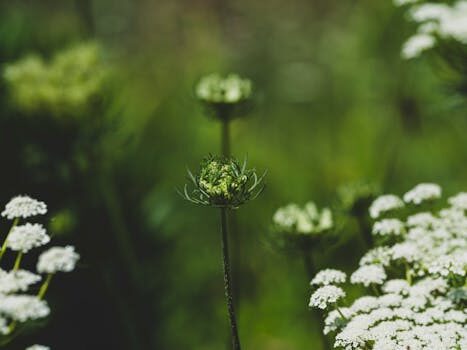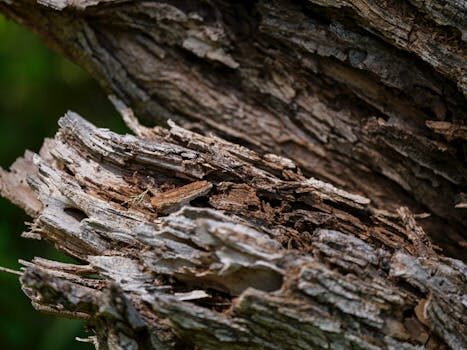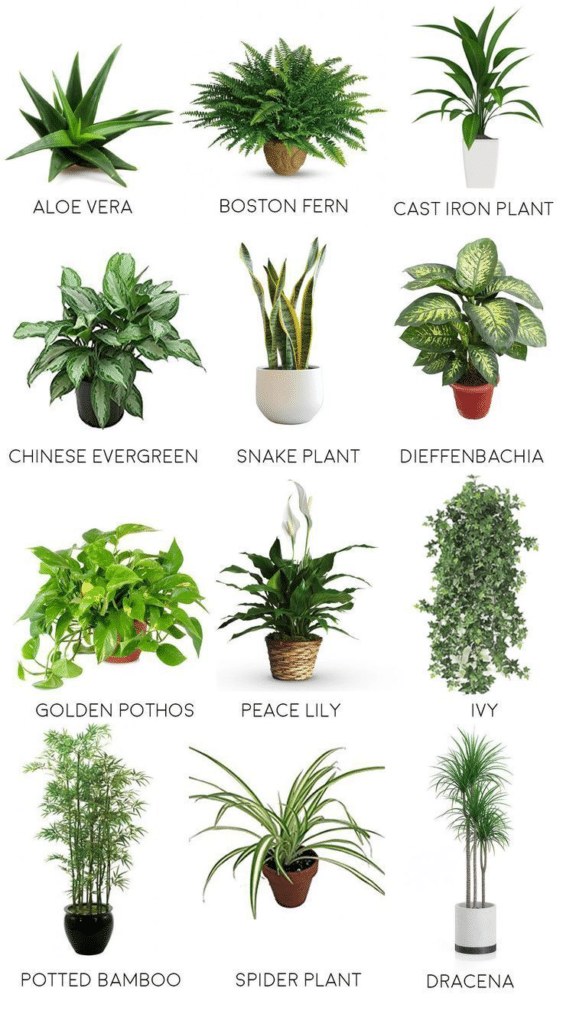Transforming your bathroom into a lush tropical oasis is more than a design enhancement—it’s a lifestyle change that can boost your well-being. Indoor plants for humid spaces not only purify the air but also turn your bathroom into a tranquil retreat.
Choosing the best plants for bathrooms doesn’t have to be a challenge. Embrace the steamy environment with species that thrive in warmth and moisture. Let’s dive into the world of bathroom botany and discover the perfect flora for your personal spa.
What are the best plants for bathrooms?
The search for the best plants for bathrooms starts with understanding your space’s specific conditions. High humidity, fluctuating temperatures, and varying light levels characterize bathroom environments. Tropical plants are often the ideal match for these conditions.
Orchids and bromeliads, with their vibrant flowers and love for moist air, are excellent choices. For those seeking low maintenance indoor plants for bathrooms, the resilient snake plant or the shade-tolerant peace lily can be perfect. They bring life to any corner with minimal fuss.
Let’s not forget the ever-popular spider plant. Known for its air-purifying capabilities and easy propagation, it’s a great starter plant for bathroom gardeners. For trailing beauty, the pothos vine or a Boston fern can add a touch of greenery to shelves and hanging baskets.
Which plants absorb moisture effectively in bathrooms?
When selecting moisture-absorbing plants for your bathroom, the goal is to find species that help maintain balance in the air’s humidity levels. Plants like the peace lily are not only elegant but also highly effective at absorbing excess moisture.
Air-purifying plants like the Boston fern thrive in the steamy conditions of a bathroom, acting as natural humidifiers and air purifiers. The spider plant is another champion in moisture control, capable of absorbing water vapor through its leaves.
For a more exotic touch, consider adding a tillandsia or “air plant,” which absorbs water and nutrients through its leaves and can flourish with minimal root systems.
What are the ideal conditions for tropical plants in bathrooms?
- Tropical plants suitable for indoor gardening often prefer warm temperatures ranging from 70 to 90 degrees Fahrenheit.
- These plants usually require bright, indirect light, so placing them near a frosted window can provide the perfect light filter.
- It’s essential to ensure proper air circulation to prevent issues like mold growth, so keep an eye on ventilation.
- While tropical plants love humidity, they don’t enjoy standing water. Make sure pots have good drainage to keep roots healthy.
How to care for low light plants in humid spaces?
Caring for plants for bathroom environments with low light requires an understanding of their specific needs. While these plants can survive with less sunlight, they still need some light to thrive.

Consider investing in grow lights if natural light is scarce, and place your low-light plants where they can receive ambient light. Water them less frequently, as they will absorb moisture from the air, and watch for signs of overwatering such as yellowing leaves.
 Revealed: Instagram’s most popular houseplants
Revealed: Instagram’s most popular houseplantsFerns, pothos, and ZZ plants are all fantastic choices for spaces with diffused light. They can adapt to the lower light conditions and maintain their lush appearance.
Are there any pet-safe plants for bathrooms?
For pet parents, finding pet-safe plants for bathrooms is a top priority. The good news is, many non-toxic options can thrive in a bathroom setting.
Spider plants, Boston ferns, and bromeliads are safe choices for households with curious cats and dogs. Always double-check the toxicity of any plant, as some popular bathroom plants like pothos can be harmful if ingested.
Create a hanging garden with pet-safe plants to keep them out of reach and add a stylish touch to your bathroom.
To complement our discussion, let’s include a visual guide on how to select and care for the perfect bathroom plants:
What are the benefits of having plants in your bathroom?
The advantages of incorporating plants into your bathroom extend beyond aesthetics. They can significantly improve your indoor air quality by filtering out toxins and producing oxygen.
Bathroom plants can also reduce stress levels, creating a spa-like ambiance that promotes relaxation and tranquility. The greenery offers a psychological connection to nature, which can be soothing and refreshing.

Furthermore, certain plants have the ability to absorb excess moisture, which can help prevent the growth of mold and mildew in your bathroom.
What are the most popular indoor plants for humid environments?
When it comes to indoor gardening, popularity often coincides with ease of care and visual appeal. The best plants for bathrooms that thrive in humidity include the peace lily, with its striking white blooms, and the adaptable orchid, which offers a variety of colors and sizes.
 Zen garden ideas: 11 ways to create a calming, Japanese-inspired landscape
Zen garden ideas: 11 ways to create a calming, Japanese-inspired landscapeThe Boston fern is another favorite, as its lush fronds create a dramatic effect. For those who prefer something less demanding, the snake plant is a go-to option, with its upright leaves and air-purifying qualities.
Lastly, the bamboo plant can bring a touch of Zen to your bathroom, and its rapid growth makes it a satisfying choice for indoor gardeners.
Related Questions on Indoor Bathroom Botany
What are the best plants for bathrooms?
The best plants for bathrooms are those that can handle high humidity and varying light conditions. Orchids, ferns, and peace lilies top the list with their ability to thrive in the unique bathroom microclimate.
For those with lower light, the ZZ plant or cast iron plant offers resilience and beauty with minimal care requirements.
How do I care for bathroom plants?
Caring for bathroom plants involves balancing light, water, and humidity. While these plants enjoy moist air, it’s essential to prevent overwatering. Use pots with drainage and water only when the topsoil is dry.
Wipe leaves regularly to remove dust and maximize their ability to absorb light and purify air. Rotate your plants to ensure even growth and light exposure.
Which plants thrive in high humidity?
Plants that naturally grow in rainforest environments, such as ferns, orchids, and bromeliads, thrive in high humidity. These species have adapted to absorb moisture from the air, making them ideal for bathroom conditions.

Aloe vera and the snake plant also do well in humid spaces, bringing added benefits like soothing gel and air purification.
Are there low light plants suitable for bathrooms?
Yes, there are several plants for humid spaces that can do well with little light. The lucky bamboo, peace lily, and ivy can survive in low-light conditions commonly found in bathrooms.
These plants will not only survive but can provide a lush, green backdrop to your daily routine.
 How to grow spinach: your go-to growing guide
How to grow spinach: your go-to growing guideWhat indoor plants are safe for pets?
For pet owners, choosing indoor plants that are safe for pets is essential. Spider plants, Boston ferns, and African violets are non-toxic and can be placed in bathrooms without worry.
Always cross-reference plants with a reliable source before bringing them into your home to ensure the safety of your furry friends.

